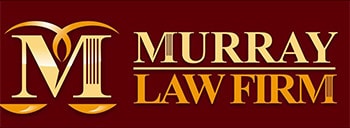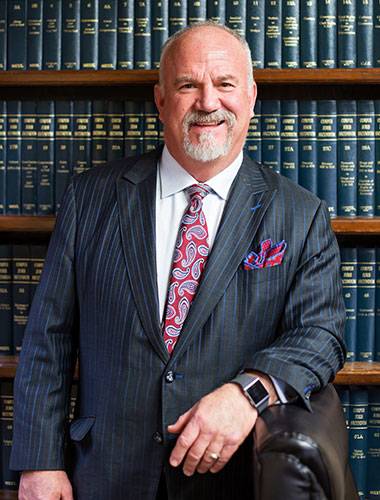Construction sites are inherently dangerous environments, filled with numerous potential hazards. Accidents on these sites can lead to severe injuries or even fatalities. When such unfortunate incidents occur, determining who is liable for the resulting damages can be a complex process. In Oklahoma, the law provides mechanisms to hold various parties accountable, depending on the circumstances surrounding the accident. Understanding who can be held liable in an Oklahoma construction accident lawsuit is crucial for injured workers seeking compensation for their injuries.
The Role of Employers in Construction Accident Liability
Employers play a significant role in maintaining a safe work environment on construction sites. They are required by law to adhere to strict safety regulations and standards to protect their employees. This includes providing proper training, ensuring that equipment is in good working order, and implementing safety protocols to mitigate risks. When an employer fails to meet these obligations, they can be held liable for accidents that occur as a result of their negligence.
In many cases, workers’ compensation insurance covers employees injured on the job, offering a no-fault system where employees receive benefits without needing to prove employer negligence. However, workers’ compensation benefits might not fully cover all damages, such as pain and suffering. In situations where employer negligence is egregious or if the employer does not carry adequate workers’ compensation insurance, injured workers may have the right to file a lawsuit against their employer for additional compensation.
Liability of Contractors and Subcontractors
Construction projects often involve multiple contractors and subcontractors, each responsible for different aspects of the work. These parties have a duty to ensure their work areas are safe and that they follow all safety regulations. If a contractor or subcontractor fails to uphold these responsibilities and an accident occurs, they can be held liable for the injuries sustained.
Determining the liability of contractors and subcontractors can be complicated, as it requires an in-depth investigation into the roles and responsibilities of each party on the construction site. Contracts and agreements between the general contractor and subcontractors are scrutinized to establish who was responsible for safety in the specific area where the accident occurred. In some cases, more than one contractor or subcontractor may share liability, especially if their combined actions or inactions contributed to the hazardous condition.
The Responsibility of Property Owners
Property owners can also be held liable for construction accidents that occur on their premises. This liability largely depends on the level of control they exert over the construction project and their awareness of any dangerous conditions. If the property owner knew or should have known about a hazardous situation and failed to address it, they could be held accountable for any resulting injuries.
The duty of care that property owners owe to construction workers is generally established through the principles of premises liability law. This area of law dictates that property owners must keep their premises reasonably safe for those who are lawfully present. In the context of a construction site, this means property owners must ensure that any known hazards are rectified or that adequate warnings are provided to prevent accidents.
Equipment Manufacturers’ and Suppliers’ Liability
Defective equipment is a common cause of construction accidents. When machinery or tools malfunction due to design flaws, manufacturing defects, or inadequate maintenance, the manufacturers and suppliers of these products can be held liable for the injuries caused. Product liability laws allow injured workers to pursue claims against these parties if it can be demonstrated that the equipment was defective and that the defect directly led to the accident.
Claims against equipment manufacturers and suppliers often require thorough technical investigations and testimony to establish that the equipment was defective. These claims may involve issues such as improper design, manufacturing errors, failure to provide adequate instructions or warnings, and failure to conduct necessary maintenance.
Architects and Engineers’ Accountability
Architects and engineers play critical roles in the planning and execution of construction projects. Their responsibilities include designing safe structures and ensuring that the construction complies with all relevant codes and regulations. If an accident occurs due to design flaws, incorrect specifications, or failure to oversee the project adequately, these professionals can be held liable for their negligence.
Proving liability for architects and engineers requires demonstrating that their actions fell below the accepted standard of care in their profession. This often involves comparing their conduct to industry standards and practices to show that they failed to exercise reasonable care in their duties. When negligence is established, injured workers may recover damages for their injuries from these professionals.
Government Agencies and Regulatory Bodies
In some cases, government agencies and regulatory bodies may bear some responsibility for construction accidents. These entities are tasked with enforcing safety regulations and conducting inspections to ensure compliance. If they fail to perform their duties adequately, resulting in unsafe conditions that lead to an accident, they can be held liable.
However, suing government agencies presents unique challenges due to sovereign immunity doctrines, which protect these entities from certain types of lawsuits. Exceptions to sovereign immunity do exist, allowing injured parties to pursue claims under specific circumstances. Legal advice is essential in navigating these complex cases and determining the feasibility of holding a government agency accountable.
Personal Injury Representation Car Accident RepresentationRelated Videos
Shared Liability and Comparative Negligence
Construction accidents often involve multiple parties, and determining liability can be complicated when more than one party is at fault. Oklahoma follows the comparative negligence rule, which allows injured workers to recover damages even if they are partially at fault for the accident. Under this rule, an injured party’s compensation is reduced by their percentage of fault. For example, if a worker is found to be 20% at fault for an accident, their compensation will be reduced by 20%.
In cases involving shared liability, each party’s degree of fault must be assessed to determine their share of responsibility. This process requires a detailed investigation into the circumstances of the accident and the roles played by each party. Legal representation is crucial in these cases to ensure that liability is accurately apportioned and that injured workers receive the compensation they deserve.
The Importance of Legal Representation
Navigating the complexities of construction accident liability requires experienced legal representation. An attorney with a deep understanding of Oklahoma’s construction laws and regulations can help injured workers identify all liable parties and pursue the full compensation they are entitled to. From investigating the accident and gathering evidence to negotiating with insurance companies and representing clients in court, a knowledgeable attorney plays a vital role in the recovery process.
Legal representation is especially important in cases involving severe injuries or fatalities. The financial and emotional impact of these accidents can be overwhelming, and having an attorney on your side can provide the support and guidance needed to secure justice and fair compensation.
Contact The Murray Law Firm Today, and Being Your Journey to Justice
If you or a loved one has been injured in a construction accident in Oklahoma, it is crucial to seek legal assistance as soon as possible. The Murray Law Firm is dedicated to helping injured workers navigate the complexities of construction accident lawsuits and hold all responsible parties accountable. Our experienced attorneys will work tirelessly to ensure that you receive the compensation you deserve for your injuries, medical expenses, lost wages, and pain and suffering.
Do not wait to take action. Contact the Murray Law Firm today for a free consultation to discuss your case. Let us help you understand your rights and guide you through the legal process to achieve the best possible outcome.



